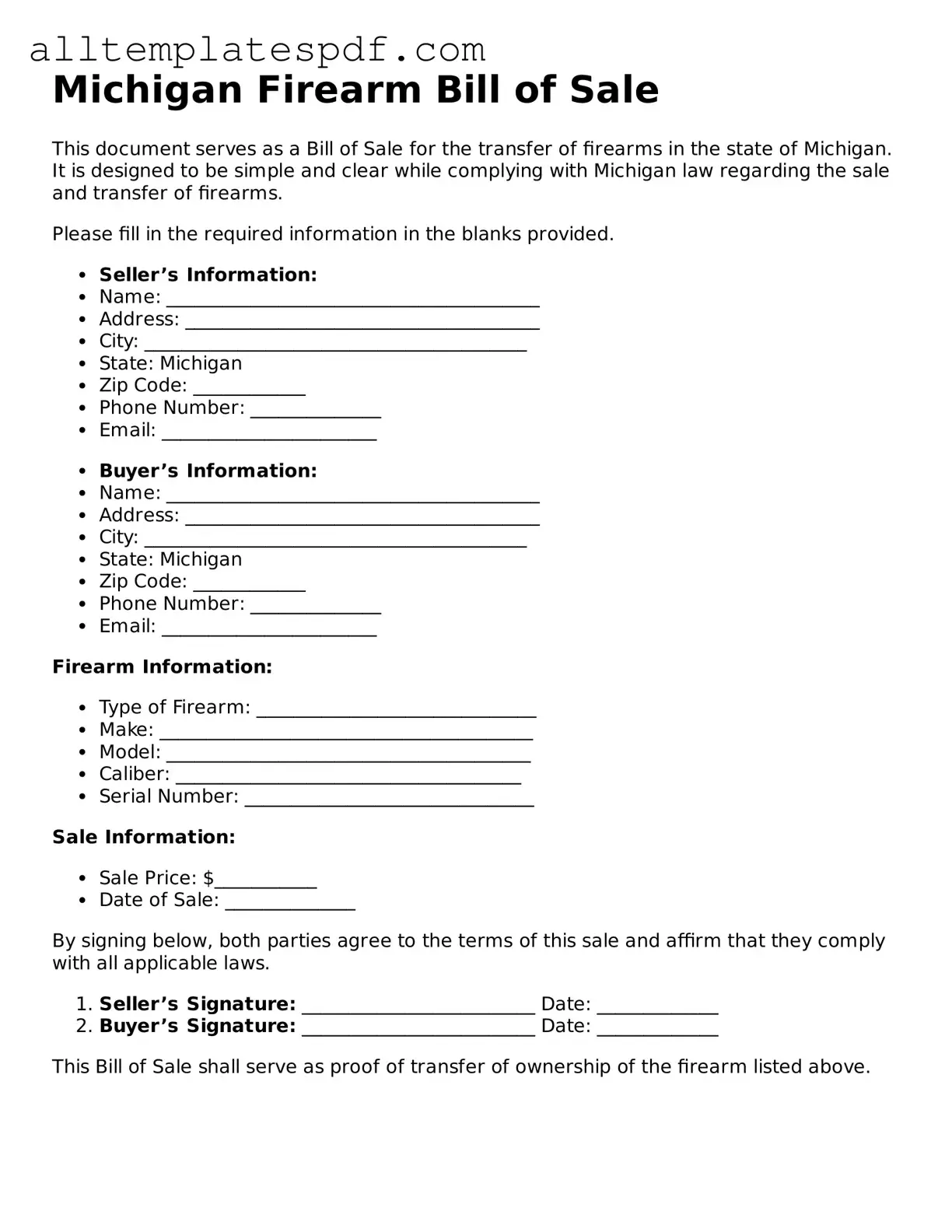When filling out the Michigan Firearm Bill of Sale form, many individuals make common mistakes that can lead to complications down the line. One prevalent error is failing to provide complete information about the firearm being sold. It's essential to include details such as the make, model, caliber, and serial number. Omitting any of these details can create confusion and may render the bill of sale invalid.
Another frequent mistake is neglecting to include the seller's and buyer's full names and addresses. This information is crucial for identifying both parties involved in the transaction. Without it, proving ownership or establishing a legal transfer of the firearm can become problematic.
People often overlook the importance of signing the document. Both the seller and the buyer must sign the bill of sale for it to be legally binding. A signature serves as an acknowledgment of the transaction and protects both parties. Forgetting this step can lead to disputes over the sale later on.
In addition, some individuals fail to date the bill of sale. A date is vital because it establishes when the transaction took place. Without a date, it becomes challenging to track ownership history, which could lead to legal issues in the future.
Another common oversight involves not keeping a copy of the bill of sale. After completing the form, both parties should retain a copy for their records. This document serves as proof of the transaction and can be beneficial if any questions arise later.
People sometimes fill out the form without verifying the buyer's eligibility to own a firearm. In Michigan, certain individuals may be prohibited from purchasing firearms due to legal restrictions. Sellers should always ensure that the buyer meets the necessary legal requirements before completing the sale.
Additionally, some individuals do not provide a clear description of the condition of the firearm. Stating whether the firearm is new, used, or in working condition is important. This transparency helps manage expectations and can prevent disputes about the firearm's condition after the sale.
Another mistake is not using the correct form. Michigan has specific requirements for firearm sales, and using an outdated or incorrect version of the bill of sale can lead to complications. Always ensure that you are using the most current form to avoid any issues.
Lastly, individuals sometimes rush through the process without reading the entire document. It’s vital to understand each section of the bill of sale before signing. Taking the time to read and comprehend the form ensures that all necessary information is included and accurate, safeguarding both parties involved.
